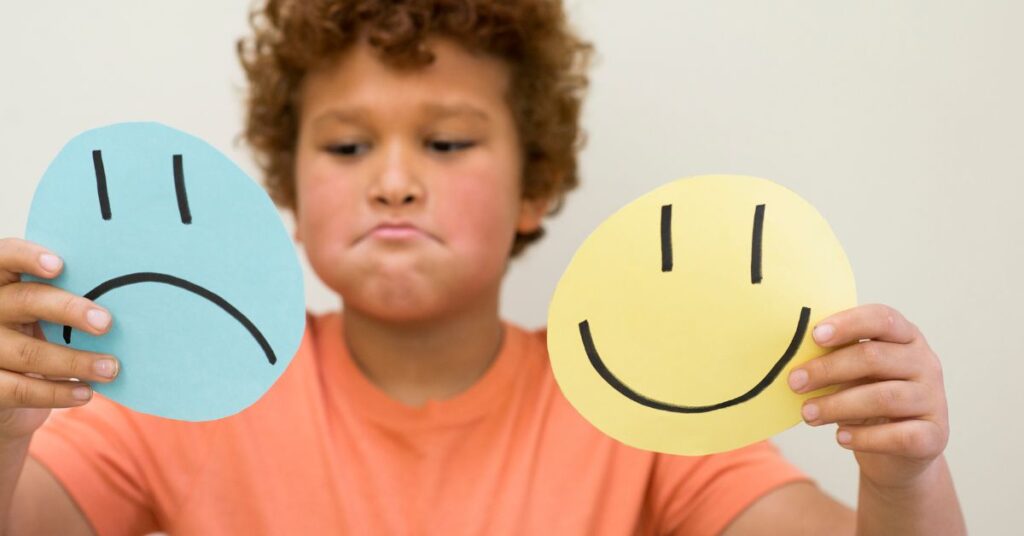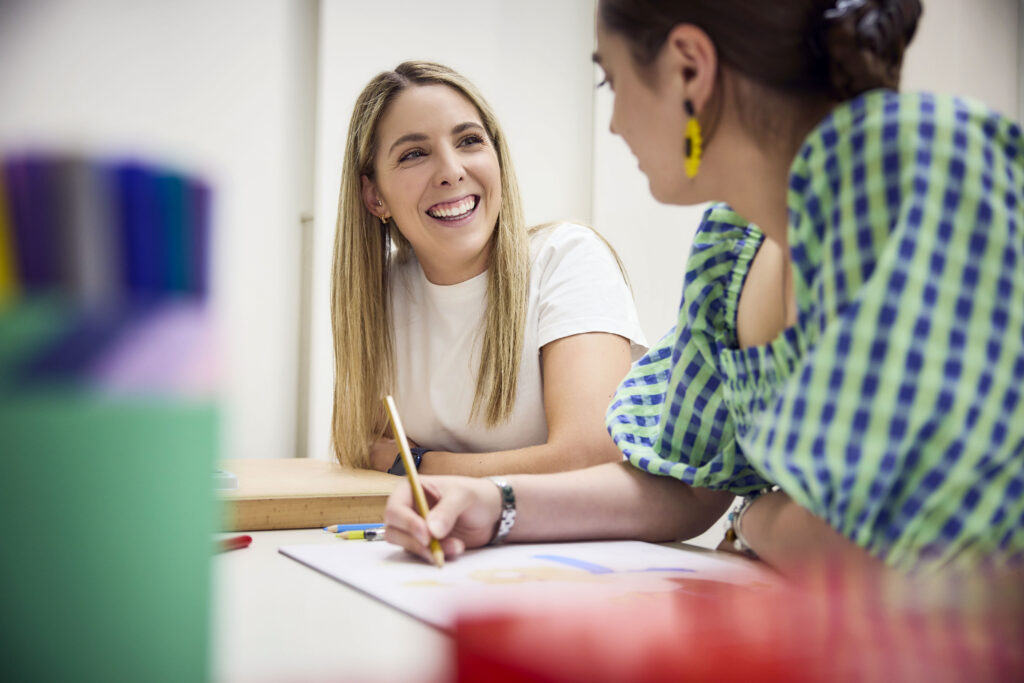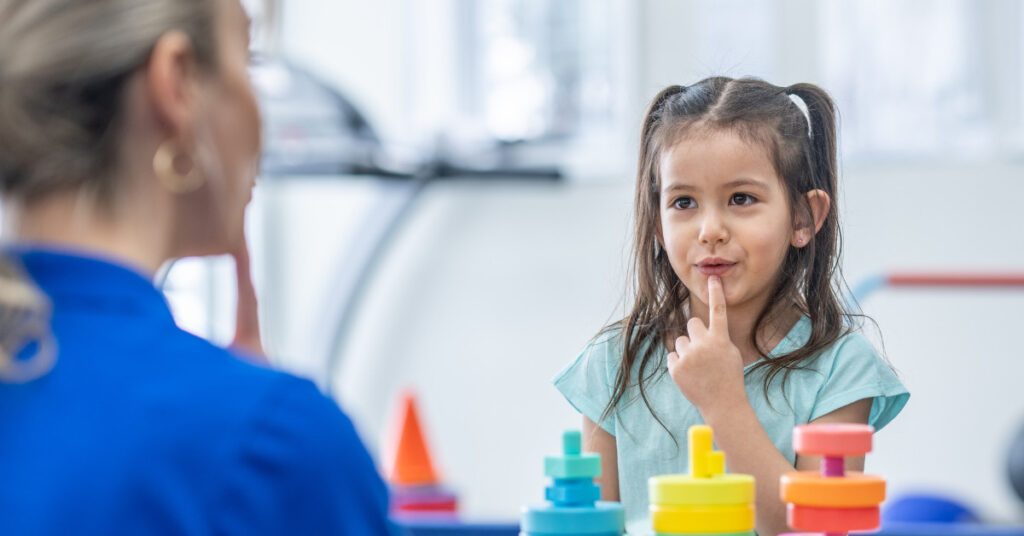Understanding Emotional Dysregulation in Children: An Occupational Therapy Perspective

Emotional regulation is a foundational skill that supports a child’s ability to engage meaningfully in daily life. From navigating friendships to participating in learning, the ability to manage emotions plays a critical role in a child’s development. As occupational therapists, we view emotional regulation not just as a psychological process, but as one deeply intertwined with sensory processing, routines, and the environment.
Emotional processing, executive functioning, and engagement in daily occupations are deeply interconnected, particularly in the context of child development and occupational therapy.
What Is Emotional Regulation?
Emotional regulation refers to the ability to monitor, evaluate, and modify emotional reactions in a way that is socially acceptable and flexible to situational demands. It includes recognizing emotions, understanding them, and using strategies to manage them effectively. This skill is not innate, it is learned and refined over time through relationships, experiences, and environmental support.
When a child struggles with emotional regulation due to sensory sensitivities, developmental delays, or environmental stressors it can significantly impact their ability to participate in meaningful daily activities, or “occupations,” such as self-care, learning, play, and social engagement. Executive functioning, which includes skills like working memory, impulse control, cognitive flexibility, and planning, plays a critical role in helping children manage these occupations effectively. For instance, a child needs to regulate frustration (emotional processing), remember multi-step instructions (working memory), and shift attention between tasks (cognitive flexibility) to complete a morning routine or engage in classroom learning.
When emotional regulation is compromised, executive functioning often becomes impaired, leading to difficulties in initiating, sustaining, or completing tasks. Occupational therapists address this triad by assessing how emotional and cognitive challenges affect occupational performance and by implementing strategies that support emotional awareness, strengthen executive skills, and adapt environments to promote successful participation in daily life.
Why Is Emotional Regulation Important?
Children who can regulate their emotions are better equipped to:
- Form and maintain healthy relationships.
- Participate in learning and play.
- Navigate transitions and changes in routine.
- Develop resilience and problem-solving skills.
Research shows that early emotional regulation is a predictor of later academic success and mental well-being (Denham et al., 2012). It also supports executive functioning, which is essential for planning, attention, and impulse control.
Environmental Influences on Emotional Regulation
Children learn emotional regulation through co-regulation which is the process of receiving support from caregivers and educators to manage their emotions. A nurturing environment that includes predictable routines, emotionally attuned caregivers, and safe spaces for expression can significantly enhance a child’s ability to self-regulate. Conversely, chaotic or inconsistent environments may contribute to dysregulation.
Signs of Emotional Dysregulation in Children
Children who struggle with emotional regulation may show:
- Frequent tantrums or meltdowns.
- Difficulty expressing or labelling feelings.
- Trouble making and keeping friends.
- Impulsivity or acting without thinking.
- Resistance to transitions or changes.
These behaviours are not signs of defiance but indicators that a child’s nervous system is overwhelmed and in need of support.

The “Coke Bottle Effect”
The Coke Bottle Effect is a powerful metaphor used to describe emotional build-up, particularly in neurodiverse children. Imagine a child as a bottle of soda. Throughout the day, small stressors such as missed breakfast, a loud classroom, a disagreement with a friend inadvertently “shake the bottle” of a child’s tolerance. Without opportunities to release pressure, the child eventually “explodes,” often at home or in a seemingly minor situation.
This analogy is especially relevant for children with Autism Spectrum Disorder (ASD) or ADHD, who may mask their emotions throughout the day. The internal pressure from masking and sensory overload can lead to emotional outbursts when they finally feel safe to release their emotions. (danieldashnawcouplestherapy.com).
Our aim is to understand what triggers “shake the bottle”, which calm the bottle and how best to support a child through their day in a way that keeps them well-regulated and develop strategies to build their self-awareness and ability to ask for assistance. As therapists, we often need to advocate for the children we see to facilitate appropriate regulation and participation across home, school and community environments.
Supporting Emotional Regulation at Home and School
At Home: Building a Foundation of Safety and Routine
The home environment plays a critical role in shaping a child’s emotional regulation. It is often the space where children feel safest to express their emotions both regulated and dysregulated.
1. Establish Predictable Routines
Children thrive on predictability. Morning and bedtime routines, consistent mealtimes, and structured transitions help reduce anxiety and provide a sense of control. Use visual schedules or picture charts for younger children to reinforce expectations.
2. Model Emotional Language
Parents are a child’s first emotional coaches. Narrate your own feelings (“I’m feeling frustrated, so I’m going to take a deep breath”) and validate your child’s emotions without immediately trying to fix them. This builds emotional literacy and trust. This is also true for modelling making mistakes and problem solving.
3. Create a Calm-Down Space
Designate a cozy area with calming tools like soft pillows, sensory bottles, noise-cancelling headphones, or weighted blankets. This is not a punishment zone, but a safe space for self-regulation. Having a teenager take “time-in” in their room is often a qay for them to regulate during the day. Monitoring what they do in that time and space may need to be considered.
4. Use Sensory Strategies
Sensory processing and emotional regulation are closely linked. Children who are sensory sensitive may become overwhelmed by noise, touch, or movement, leading to emotional outbursts. Conversely, children who are under-responsive may seek intense input (e.g., crashing, spinning) to feel regulated.
- Incorporate sensory-rich activities into daily routines:
- Heavy work: carrying groceries, pushing laundry baskets, or animal walks.
- Tactile play: playdough, kinetic sand, or water play.
- Movement: trampoline time, yoga, or dance breaks.
These activities help regulate the nervous system and prepare children for transitions or challenging tasks.
5. Practice Mindfulness Together
Simple mindfulness practices like guided breathing, body scans, or gratitude journaling can help children become more aware of their internal states and learn to pause before reacting.
Simple activities like the “Five Senses Exercise” (naming things they see, hear, feel, smell, and taste) help ground children in the present moment.
Use playful methods like “balloon breathing” (inhale to fill the balloon, exhale slowly) to teach children how to calm their bodies.
At School: Embedding Regulation into the Learning Environment
Schools are stimulating environments that can be overwhelming for children with emotional regulation challenges. Teachers and support staff can play a pivotal role in creating emotionally supportive classrooms.
1. Integrate Movement Breaks
Short, structured movement breaks throughout the day help children reset and refocus. Examples include:
- “Brain breaks” with stretching or dancing.
- Sensory circuits with jumping, crawling, or wall pushes.
- Access to fidget tools or wobble cushions for seated movement.
2. Use Visual Supports
Visuals help children understand expectations and reduce cognitive load.
Use:
- Emotion thermometers or zones of regulation charts for children to identify where their emotions sit at any given time. These often have suggestions of how to move between different “zones” back to a regulated state.
- Visual timers for transitions.
- Cue cards for calming strategies.
3. Teach Emotional Literacy
Incorporate social-emotional learning (SEL) into the curriculum. Use books, role-play, and group discussions to explore emotions, empathy, and problem-solving. Use Emotion Games such as:
- Emotion cards help children label feelings.
- Role-playing builds empathy and understanding.
- Feelings charades enhances non-verbal expression.
4. Offer Flexible Seating and Quiet Zones
Allow children to choose where they work including options such as eanbags, standing desks, or quiet corners. These options support autonomy and sensory needs.
5. Co-Regulate Before You Expect Self-Regulation
When a child is dysregulated, they need connection before correction. Sit beside them, offer a calm tone, and help them name their feelings. Once calm, you can reflect together on what happened and what strategies might help next time.
6. Grounding in Nature
Encourage barefoot walks on grass, playing in sand, or simply being outdoors. Nature provides rich sensory input and promotes calm.

Emotional Development Milestones: Ages 3 to 18
Understanding what’s typical at each age helps set realistic expectations and guides support strategies:
- Age 3: Children begin to recognize and mimic emotions. They may show concern when someone is upset and start to express simple emotions.
- Age 4: Emotional vocabulary expands. Children begin to use words to describe feelings and recognize emotions in others.
- Age 5: Self-regulation skills emerge. Children start managing impulses and adapting to social situations.
- Age 6: They begin to understand complex emotions like jealousy and pride and can discuss mixed feelings.
From age 7 onward, emotional development becomes more nuanced:
Ages 16–18: Older teens strive for independence, develop pride in accomplishments, and begin forming deeper romantic and peer relationships.
Ages 7–8: Children become more aware of how others perceive them. They may struggle with peer relationships and begin expressing emotions with more complexity.
Ages 9–10: Friendships deepen. Children may share secrets and jokes, but also begin to assert independence and test boundaries.
Ages 11–13: Pre-teens become introspective and value peer opinions. Mood swings and a need for privacy are common.
Ages 14–15: Teens explore identity through clothing, interests, and social groups. Emotional intensity increases, and they may challenge authority.
A Collaborative Approach
Emotional regulation is not a skill children develop in isolation. It requires consistent support, modelling, and practice. Parents, educators, and therapists must work together to create environments where children feel safe to express and manage their emotions.
By understanding the sensory and developmental underpinnings of emotional regulation, we can better support children in becoming resilient, emotionally intelligent individuals.
Our team at Early Start Australia are trained in emotional regulation and ready to work with your child, teen to build skills, confidence, and independence.
Reach out to our care team to learn more about how Early Start Australia can support your child and family or contact us today to learn more or book an appointment.
By Nicole Katzenellenbogen









